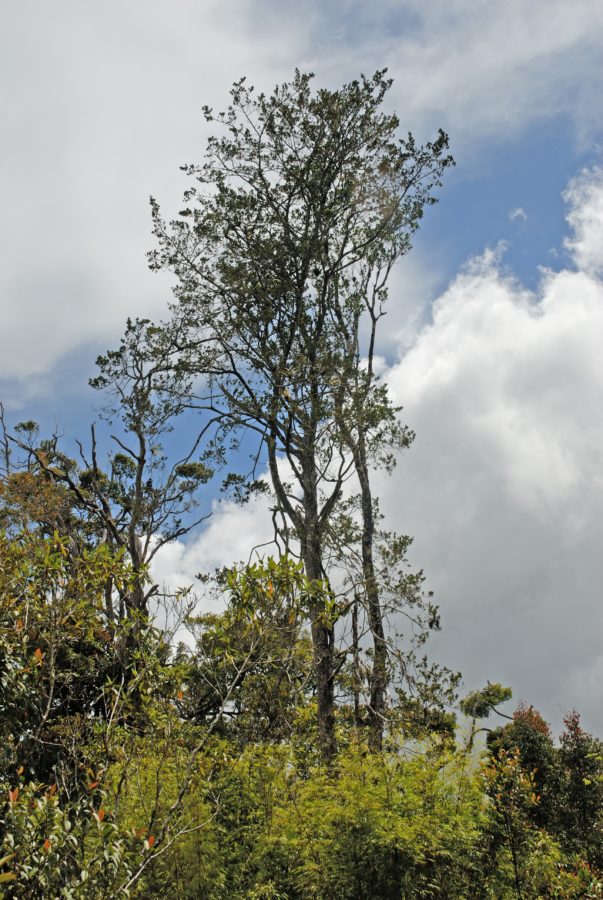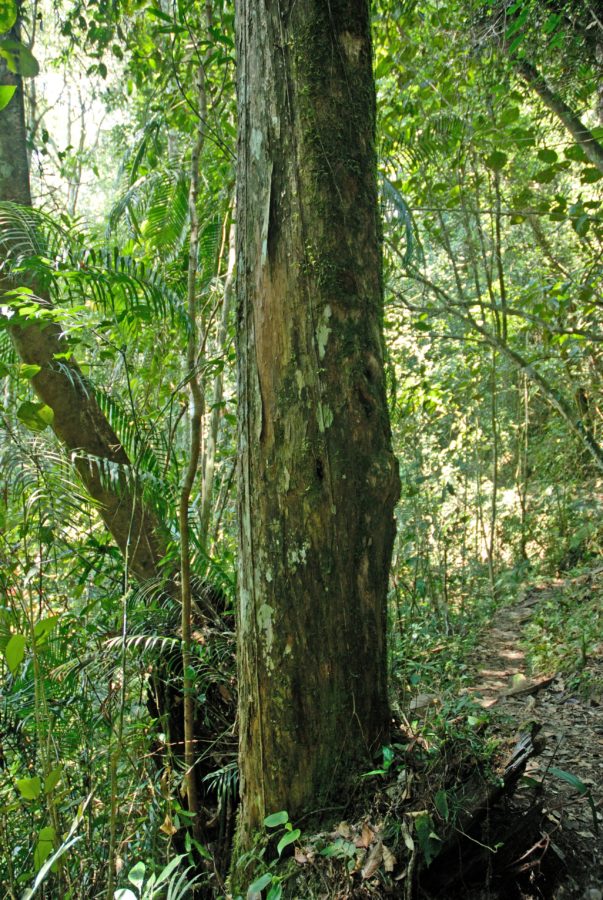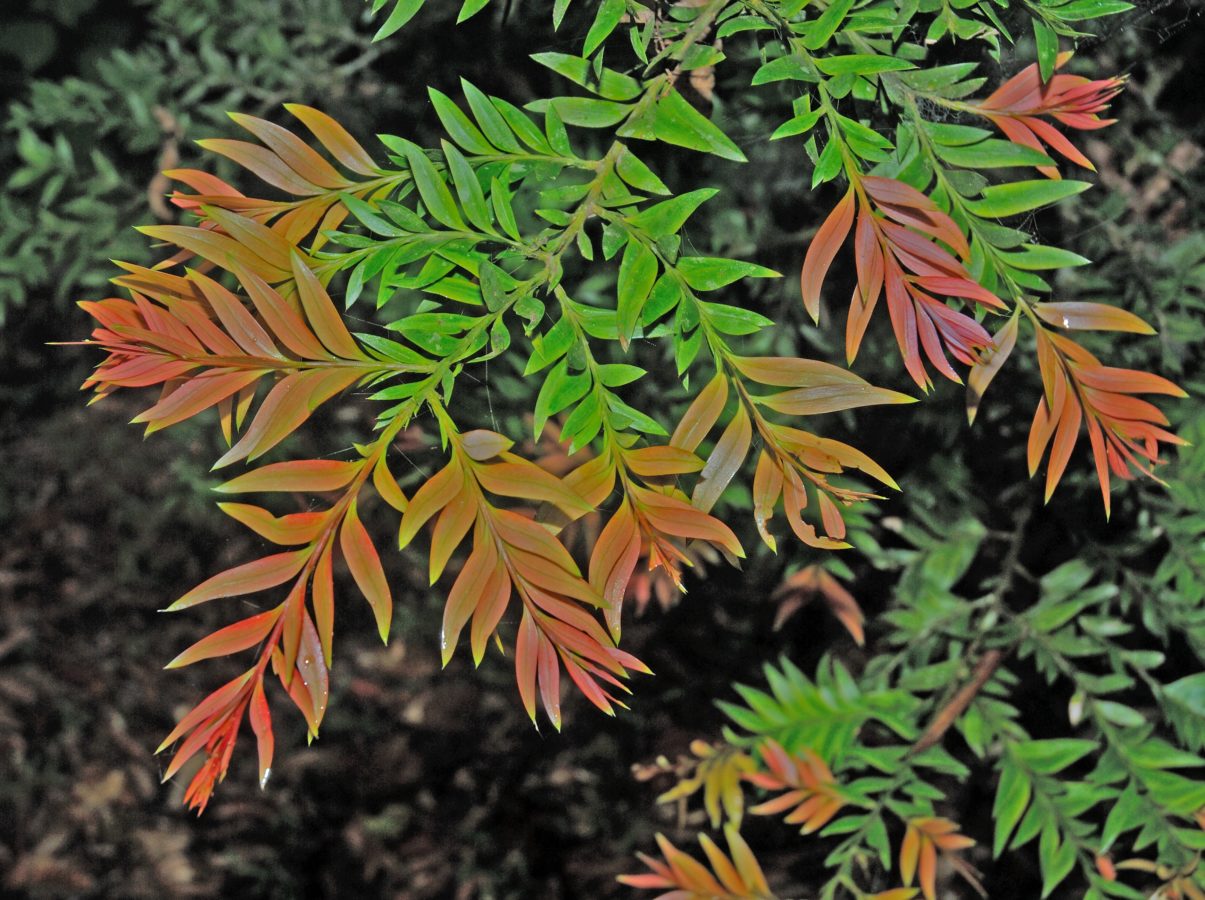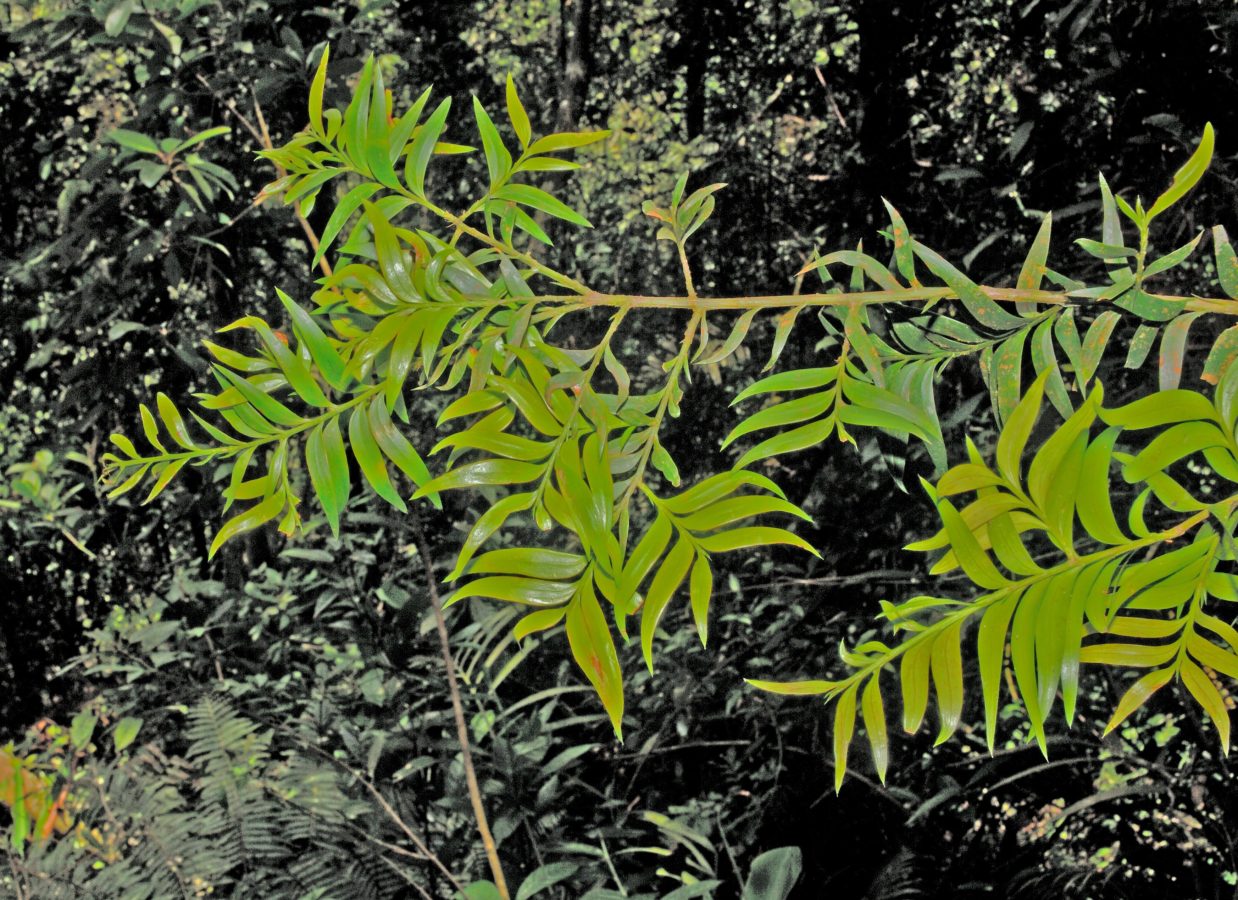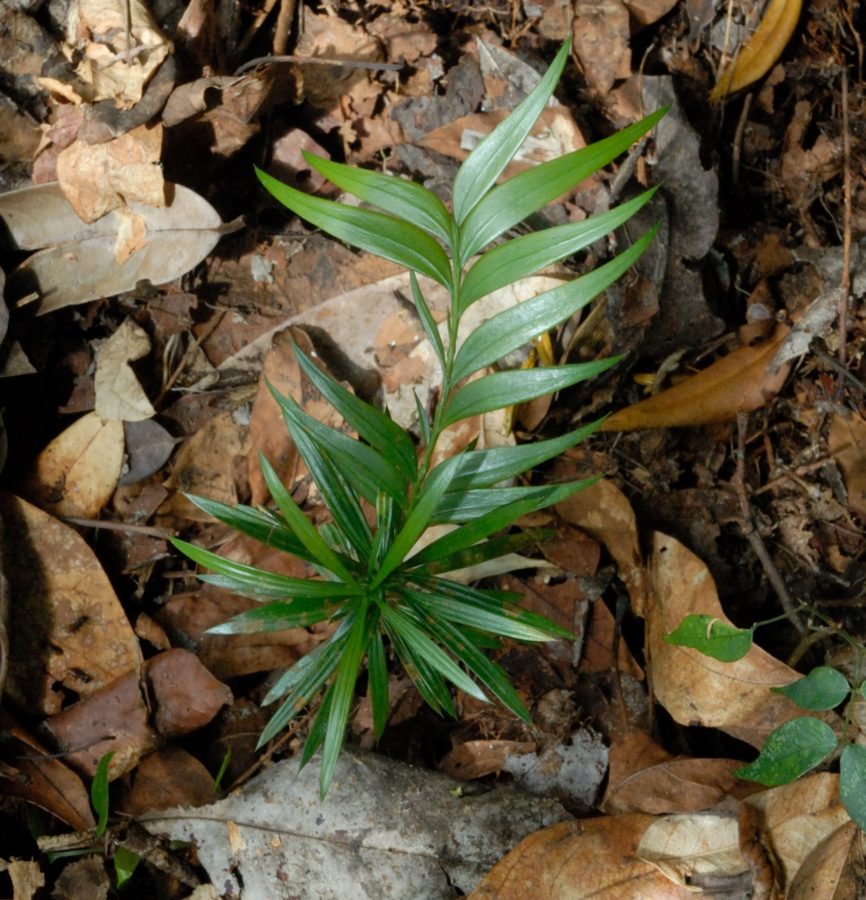Podocarpaceae
Falcatifolium falciforme
A widespread species that has been impacted by habitat loss and conversion, especially in the lower elevation parts of its range. The extent of decline in likely to be close to the threshold for Vulnerable so that it is assessed as Near Threatened
Human Uses
The rather rare large trees of this species will be logged together with other podocarps when growing outside protected areas. Its wood is traded as 'sempilor' together with that of Dacrydium, Dacrycarpus and Phyllocladus. Falcatifolium wood is light and easy to work; it is used in light construction, doors, windows, joinery, furniture, interior finishing, veneers as well as boat masts and crates. The wood is not durable and therefore unsuitable for work that will be exposed to outdoor conditions. It is in cultivation only as specimens in some tropical botanic gardens.
References and further reading
- Enright, N. J., & Jaffré, T. (2011). Ecology and distribution of the Malesian podocarps. Smithsonian Contributions to Botany, 95, 57-78.
- Farjon, A. & Carter, G. 2013. Falcatifolium falciforme. The IUCN Red List of Threatened Species 2013: e.T42475A2981700. http://dx.doi.org/10.2305/IUCN.UK.2013-1.RLTS.T42475A2981700.en. Downloaded on 28 July 2017.
- Kitayama, K., Aiba, S. I., Ushio, M., Seino, T., & Fujiki, Y. (2011). The ecology of podocarps in tropical montane forests of Borneo: distribution, population dynamics, and soil nutrient acquisition. Smithsonian Contributions to Botany, (95).
- Proctor, J., Argent, G. C., & Madulid, D. A. (1998). Forests of the ultramafic Mount Giting-Giting, Sibuyan Island, the Philippines. Edinburgh Journal of Botany, 55(2), 295-316.
- Repin, R., Majuakim, L., Suleiman, M., Nilus, R., Mujih, H., & Gunsalam, G. (2012). Checklist of trees in Crocker Range Park Permanent Research Plot, Sabah, Malaysia. Journal of Tropical Biology & Conservation (JTBC), (9).
- Suratman, M.N., Hamid, N.H.A., Sabri, M.D.M., Kusin, M. & S.A.K. Yamani 2015. Changes in tree species distribution along altitudinal gradients of montane forests in Malaysia. in (eds) Ozturk, M. Hakeem, K.R., Faridah-Hanum & R. Efe. Climate Change Impacts on High-Altitude Ecosystems, Springer International Publishing pp 491-522
